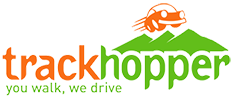WHAT TO TAKE
Here is a list of what to pack for a memorable and successful hike! Whether you’re an experienced trekker or embarking on your first multi-day hiking adventure, choosing the right gear and essentials is crucial for a safe and enjoyable journey. These are our recommendations on the must-have items to take along to ensure you’re well-prepared and equipped for the challenges of the trail.
Personal equipment
Tip: lay all your gear out on your bed, so it is easy to see what you have (or are missing)
- Backpack – 40–60 litre size for multi-day hiking
- Waterproof/plastic pack liner
- Sleeping bag – 3–4 season
- First aid kit including blister treatment materials
- Survival kit including survival blanket, whistle, paper, pencil, high energy snack food
- Safety equipment relevant to the track and time of year, for example, map, compass
- Torch/flashlight and spare batteries
- Rubbish bag
- Booking confirmation and ID
- Earplugs for communal bunkrooms
Clothing
- For multi-day walking you’ll need at least one set of clothes to walk in and another dry set to change into at night.
- Tramping/hiking boots or firm footwear – should be comfortable and well broken in
- Socks – wool or polypropylene
- Shorts – quick dry material
- Shirt – wool or polypropylene
- Under layers, top and bottom – wool or polypropylene
- Mid-layers – wool or polar fleece
- Raincoat – waterproof, windproof with hood
- Overtrousers – wind and waterproof
- Warm hat and gloves
- Sunhat and sunglasses
- Extra socks, underwear, shirt/lightweight jersey
Optional
- Gaiters
- Lightweight shoes for inside the huts
Cooking and food equipment
- Drink bottle – 1–2 litre capacity
- Eating and cooking utensils – knife, fork, spoon, plate, cup, pot/pan/billy, cleaning kit, tea towel. Check individual huts for what cooking facilities and lighting are provided.
- Matches or lighter in waterproof container
Toiletries
- Toiletries, including insect repellent, sunscreen, and personal medication, for example, antihistamine for allergy to wasp stings
- Use a toilet when you see one and be prepared with a backup toilet option
If Camping
- Tent
- Sleeping mat
- Ground sheet
- Gas cooker
Food
You cannot buy food on the track.
Bring food that is lightweight, fast cooking and high in energy value. For example:
- Breakfast: cereal/porridge/oats, firm bread, honey or other spreads
- Lunch: cracker biscuits, cheese, salami, jam/jelly, fruit
- Dinner: instant soup, pasta or rice, dried vegetables or fruit, cheese or dehydrated (freeze-dried) meals.
You’ll also need water, snacks, biscuits, muesli bars, tea or coffee, powdered fruit drinks and emergency food in case of any delays on the track.
